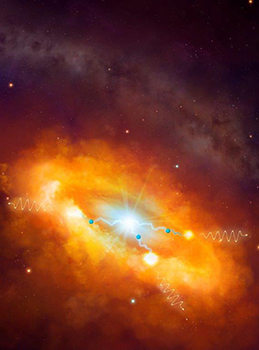Latest News Archive
Please select Category, Year, and then Month to display items
18 May 2023
|
Story KEKELETSO TAKANG
|
Photo PEXELS

The initiative is not only aimed at getting potential (nascent) entrepreneurs (students, lecturers, stream of external entrepreneurs) actively involved in entrepreneurship, but also to keep them engaged and take them through a value chain to enable them to establish and run a sustainable business. The Business Management Start-Up Initiative will equip students with practical experience, along with the theoretical knowledge that they will accumulate, thus delivering resilient, capable, proudly Kovsie students to industry.
Students will fundamentally understand how business works, improving their employability when they enter a business as employees, and providing them with the skills to become self-employed.
Students can look forward to several interactive sessions with knowledgeable presenters, who will guide them through a well-structured process to continuously evaluate their business ideas against the knowledge gained. Moreover, the active involvement of mentors implies that students will have access to expert sounding boards for advice and motivation. Lastly, due to the partnerships with external stakeholders, students will be exposed to ‘real-life’ industry situations, exposing them to a wealth of industry-specific knowledge.
And just in case that is not enough to get you excited, let the possibility of funding for your new venture be the last drop of motivation you need to fill your tank for action!
Come join the Business Management team every Wednesday between 13:00 and 14:00 in the Flippie Groenewoud Gebou (FGG) 378 to be part of this exciting opportunity!
For more information on the initiative and the topics, click here.
Two scientists part of team that discovers the source of the highest energy cosmic rays at the centre of the Milky Way
2016-03-22

Artist's impression of the giant molecular clouds surrounding the Galactic Centre, bombarded by very high energy protons accelerated in the vicinity of the central black hole and subsequently shining in gamma rays.
Artist's impression: © Dr Mark A. Garlick/ H.E.S.S. Collaboration Spotlight photo:
Dr Brian van Soelen and Prof Pieter Meintjes of the UFS Department of Physics.
Photo: Charl Devenish
|
H.E.S.S. (High Energy Stereoscopic System) scientists publically revealed their latest galactic discovery in the international science journal, Nature, on 16 March 2016. These scientists were able to pinpoint the most powerful source of cosmic radiation – which, up to now, remained a mystery.
Part of this team of scientists are Prof Pieter Meintjes and Dr Brian van Soelen, both in the University of the Free State (UFS) Department of Physics. Dr Van Soelen explains that they have discovered a proton PeVatron – a source that can accelerate protons up to energies of ~1 PeV (10^15 eV) – at the centre of the Milky Way. The supermassive black hole called Sagittarius A has been identified as the most plausible source of this unprecedented acceleration of protons.
The protons are accelerated to Very High Energy (VHE) gamma rays. The energy of these protons are 100 times larger than those achieved by the Large Hadron Collider at CERN (the European Organization for Nuclear Research).
According to Dr Van Soelen, the fact that this research has been published in Nature demonstrates the importance and pioneering nature of the research conducted by H.E.S.S. The H.E.S.S. observatory – operational in Namibia – is a collaboration between 42 scientific institutions in 12 countries.
In 2006, H.E.S.S. was awarded the Descartes Prize of the European Commission – the highest recognition for collaborative research – and in 2010 the prestigious Rossi Prize of the American Astronomical Society. The extent of the observatory’s significance places it among the ranks of the Hubble Space Telescope and the telescopes of the European Southern Observatory in Chile.
“The next generation VHE gamma-ray telescope,” Dr Van Soelen says, “will be the Cherenkov Telescope Array (CTA), which is currently in the design and development stage.” Both Dr Van Soelen and Prof Meintjes are part of this project as well.
H.E.S.S. has issued a complete statement about the paper published in Nature.